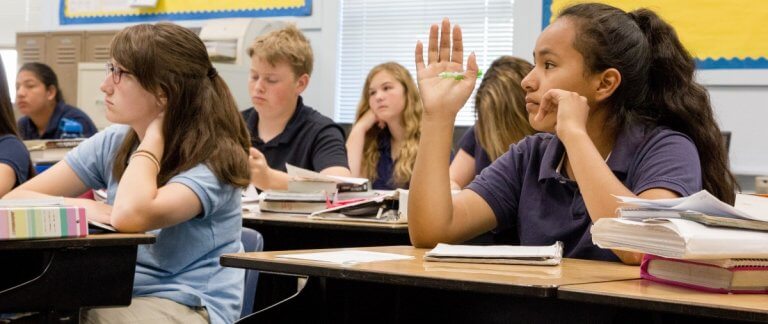
Getting kids to sit still is a tall order. Yet, for as long as can be remembered, schools have made them sit at desks for the most part of the day. As adults confined to office desks, we can relate to how this isn’t really the most ideal position. Our posture and bodies suffer from sitting and craning our necks towards computers for too long.
It hurts for us, but it turns out this is hurting our children more than we think.
Writing in Principal, published by the National Association of Elementary School Principals, author Brad Johnson described this time-old practice of sitting at school desks as “inhumane”.
He lists the health-related issues that arise from this: rising obesity (“One in three children in the US is overweight or obese — double the figures from the 1980s”), diabetes (“From 2000 to 2009, incidences of adult-onset (Type 2) diabetes in children and teens increased 30 percent”) and attention-deficit/hyperactivity disorders (“…5.7 million children age 6-17 who have been diagnosed with ADHD”).
“Beyond the obvious health-related issues, research suggests that sedentary education might be the reason that students’ creativity and intelligence are hindered throughout their formative years,” wrote Johnson. He is also co-author of Learning on Your Feet: Incorporating Physical Activity Into the K-8 Classroom.

Are standing desks the solution? Source: Shutterstock
Johnson isn’t the first to assail the traditional school desk. Ever since standing desks were introduced, they have been recommended for classrooms alongside offices. Early studies appear to be promising, with some showing enhanced scores, increased creativity and greater student engagement. Standing desks are the here and now trend to make all of us less sedentary.
But a 2015 study of middle-aged to senior Japanese workers found no link between sitting at work and cardiovascular risk, according to Aaron E Carroll, Professor of pediatrics at Indiana University School of Medicine.
Another review by the American Journal of Preventive Medicine, focusing on prospective studies (following groups of people forward over time) also found a lack of evidence to support the link between sitting at work and poor health outcomes. While sitting for too long is bad, standing desks aren’t a great solution. Health advocates suggest taking frequent walking breaks instead.
Johnson recommends the same for children in schools. More movement for children means more benefits for them in terms of learning.
“First, physical activity improves brain elasticity, which allows children to learn more easily. Second, there is evidence that contact with the natural environment has a calming effect on children. And third, exercise releases endorphins (neurotransmitters that produce a feeling of well-being) that make children feel more relaxed,” Johnson said.
“Finally, the part of the brain that processes movement also processes learning. So when students are sitting still, the learning process is actually hindered rather than enhanced.”
It’s not just new age offices—some schools are getting in on the standing desk health movement now as wellhttps://t.co/ehxaQ0Twof
— NowThis (@nowthisnews) October 14, 2015
With static classrooms in which desks dominate space, is it possible for educators to incorporate more movement into their classes? Standing desks may be all the rage right now, but they aren’t cost-effective and lack substantive research to compel schools to invest in them.
Johnson offered some ideas from his experience as a middle-level science teacher, such as letting students stand by their desks, sit or lie on the floor, even doing push-ups at the back of the class.
“This became the norm for the classroom quickly, so there were few behavior issues.”
Liked this? Then you’ll love…
Smartphones in schools: Yes, no or maybe?
The elite schools India’s rich and famous send their kids to







